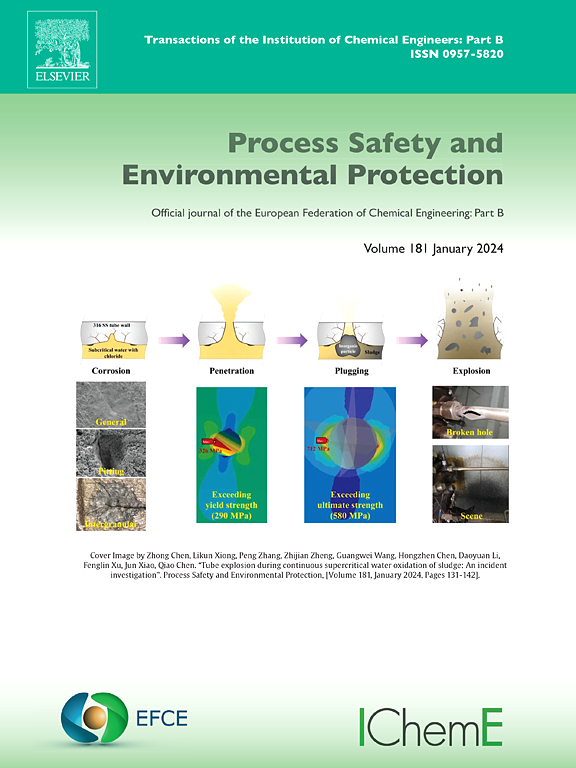Enzymatic copolymerization opens new horizons for rhizoremediation and humification of estrogenic pollutants in water-soil-crop agroecosystems
IF 7.8
2区 环境科学与生态学
Q1 ENGINEERING, CHEMICAL
引用次数: 0
Abstract
Estrogenic pollutants (EPs) constitute a class of biologically potent endocrine disruptors that impair reproductive functions, trigger cardiovascular diseases, and elevate oncogenic risks in humans. Livestock and poultry manure, a major agricultural waste stream, contains significant quantities of EPs. Its extensive application in agroecosystems facilitates the uptake and acropetal movement of EPs by edible crops, thereby posing risks of human exposure via food consumption. Microbially-derived laccase, ubiquitously distributed in agroecosystems, exhibits exceptional efficacy in EP detoxification through enzymatic polymerization. By mediating copolymerization between EPs and co-substrates, the enzymatic process generates non-toxic precipitates——a mechanism validated in experimental bioremediation protocols targeting EP-contaminated water, soil, and rhizosphere environments. This process mirrors natural humification pathways, offering dual benefits of pollutant decontamination and humus-like substance formation within root-associated zones. This study summarizes the new horizons opened by microbe-produced laccase for EP rhizoremediation, organic carbon humification, and crop uptake. We briefly delineate the current status of EP soil contamination and crop accumulation in China, followed by an analysis of EP subcellular partitioning and cytotoxic effects across crop organs. Subsequently, interactions between EPs and specified root exudates at the rhizosphere microinterfaces are elucidated. Notably, enzymatic copolymerization mechanisms governing EP rhizoremediation and humification in water-soil-crop matrices are emphasized. Strategic in situ regulation of rhizosphere microbiome-derived laccase activity presents innovative avenues for mitigating EP pollution, accelerating biotic humification, and curbing carbon emissions. These advancements hold transformative potential for organic pollutant management, rhizosphere microenvironment optimization, and sustainable food production in modern agroecosystems.
酶共聚为水-土壤-作物农业生态系统中雌激素污染物的根茎修复和腐殖质化开辟了新的视野
雌激素污染物(EPs)是一类生物上有效的内分泌干扰物,可损害生殖功能,引发心血管疾病,并提高人类的致癌风险。畜禽粪便是一种主要的农业废物流,其中含有大量的EPs。它在农业生态系统中的广泛应用促进了可食用作物对EPs的吸收和向高处移动,从而增加了人类通过食物消费接触EPs的风险。微生物来源的漆酶,普遍分布在农业生态系统中,通过酶聚合在EP解毒中表现出卓越的功效。通过介导EPs和共底物之间的共聚,酶促过程产生无毒沉淀物——这一机制在针对EPs污染的水、土壤和根际环境的实验生物修复方案中得到了验证。这一过程反映了自然腐殖质化途径,在根相关区域提供污染物净化和腐殖质样物质形成的双重好处。本文综述了微生物产漆酶在EP根茎修复、有机碳腐殖化和作物吸收方面开辟的新领域。本文简要介绍了中国EP土壤污染和作物积累的现状,并分析了EP在作物器官中的亚细胞分配和细胞毒性作用。随后,在根际微界面上阐明了EPs与特定根渗出物之间的相互作用。值得注意的是,酶共聚机制控制EP根修复和腐殖质在水-土壤-作物基质强调。根际微生物源漆酶活性的策略性原位调控为减轻EP污染、加速生物腐殖化和抑制碳排放提供了创新途径。这些进步对现代农业生态系统中的有机污染物管理、根际微环境优化和可持续粮食生产具有变革性潜力。
本文章由计算机程序翻译,如有差异,请以英文原文为准。
求助全文
约1分钟内获得全文
求助全文
来源期刊

Process Safety and Environmental Protection
环境科学-工程:化工
CiteScore
11.40
自引率
15.40%
发文量
929
审稿时长
8.0 months
期刊介绍:
The Process Safety and Environmental Protection (PSEP) journal is a leading international publication that focuses on the publication of high-quality, original research papers in the field of engineering, specifically those related to the safety of industrial processes and environmental protection. The journal encourages submissions that present new developments in safety and environmental aspects, particularly those that show how research findings can be applied in process engineering design and practice.
PSEP is particularly interested in research that brings fresh perspectives to established engineering principles, identifies unsolved problems, or suggests directions for future research. The journal also values contributions that push the boundaries of traditional engineering and welcomes multidisciplinary papers.
PSEP's articles are abstracted and indexed by a range of databases and services, which helps to ensure that the journal's research is accessible and recognized in the academic and professional communities. These databases include ANTE, Chemical Abstracts, Chemical Hazards in Industry, Current Contents, Elsevier Engineering Information database, Pascal Francis, Web of Science, Scopus, Engineering Information Database EnCompass LIT (Elsevier), and INSPEC. This wide coverage facilitates the dissemination of the journal's content to a global audience interested in process safety and environmental engineering.
 求助内容:
求助内容: 应助结果提醒方式:
应助结果提醒方式:


